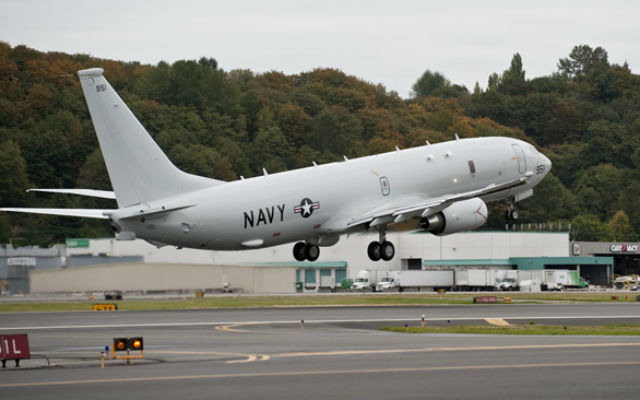The UK has renewed its Seedcorn maritime patrol project that sees it integrated with allied forces for another three years, maintaining the capability it lost with the cancelled BAE Systems Nimrod MRA4 until a replacement is sought.
Royal Air Force crews will continue operating at the same rate in Australia, Canada, New Zealand and the USA, maintaining an anti-submarine and anti-surface warfare capability and intelligence, surveillance and reconnaissance skills.
A decision is still to be made on how the UK is going to pursue a replacement for the Nimrods that were cancelled in its Strategic Defence and Security Review of 2010.
Seedcorn crews are integrated into test-and-evaluation squadrons such as VX-1 at NAS Patuxent River in Maryland, the USA, operating systems such as the US Navy’s Boeing P-8 Poseidon maritime patrol aircraft (pictured below) and Northrop Grumman MQ-4C Triton unmanned air vehicle. They are not involved in frontline operations for the nations that they are working alongside.

Rex Features
During the Royal International Air Tattoo (RIAT) at RAF Fairford in the UK from 17-19 July, members of the P-8 crew based at Patuxent River touted the capability of the aircraft: the P-8 is widely understood to be at the top of the Ministry of Defence’s shopping list for a maritime patrol aircraft (MPA).
The P-8 has the largest footprint in Seedcorn, with some 20 UK personnel allocated to operating the type, the RAF says.
The USN has a requirement for 109 P-8s that will replace Lockheed Martin P-3 Orions in service. There will be six squadrons based on the US east coast and six on the west coast, plus three deployment sites – one in Japan, one at NAS Sigonella in Sicily, Italy, and one in Bahrain.
The Japanese detachment has completed two six-month rotations and is taking part in a third. The Middle Eastern detachment will begin a rotation next year, while the European detachment will begin a rotation some time in 2017-2018.
Source: FlightGlobal.com






















